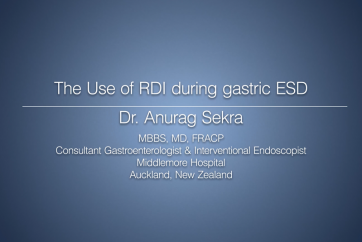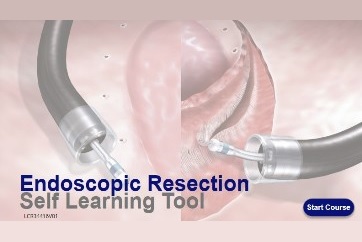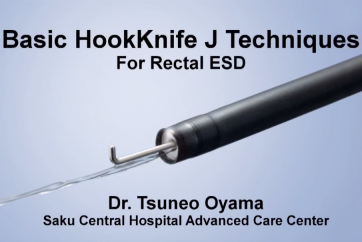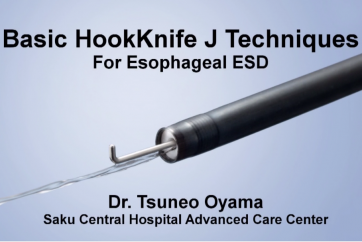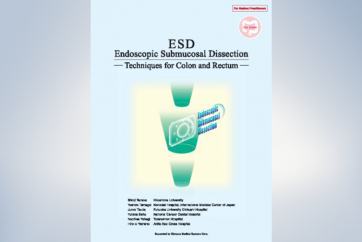Support Devices

Coagrasper Model FD-410LR
HotClaw Model FD-420LR
HotBite Model FD-430L
Dr. Toshihiko Doi
National Cancer Center Hospital East
Coagrasper Model FD-410LR
HotClaw Model FD-420LR
HotBite Model FD-430L
Dr. Toshihiko Doi
National Cancer Center Hospital East
Interview With The Expert
They minimise bleeding and are all designed with full consideration for safety. HotClaw is suitable for connecting the incised parts or when approach with ITknife is difficult. HotBite and Coagrasper are support devices for ESD procedure and should be used when required during it.
However, in positions where biopsy is difficult (where forceps should be positioned in the tangential direction), inevitably these devices are also difficult to use. In addition, cutting regions with strong fibrosis may be difficult. Due to the fact that, in present, coagulation results in strong degradation and electrosurgical systems have not yet been improved, these devices should be used as support devices. On the contrary, ITknife can cut those difficult positions mentioned above more easily and safely. For speedy cutting in the vertical position, ITknife will be the best. Please be noted, with any of these devices, grasping too much mucosa will lead to dropping the electrical resistance and adequate cauterisation may become difficult even if the current is supplied.
ITknife is faster so I generally use it. I use other devices as support devices for now, but I believe ITknife has the lowest electrical risk. Using the appropriate device for a specific purpose is important, but there are affinities for each devices, just like there are surgeons who are good at using Cooper, surgeons who are good at using an electrosurgical knife, etc. Select the device you use not from “rumours” but from the viewpoint of radical curability and safety.
Applicability of the Support Devices
Difficulty per region
○ : Easy. No mark: Ordinary. △ : Difficult.
| Cardiac region | △ | To facilitate, use a hood after circumferential incision. |
|---|---|---|
| Fornix | △ | Distance from the endoscope is a problem |
| Lesser curvature of upper body | △ | Shallow circumferential incision is recommended |
| Greater curvature of upper body | △ | Ease the procedure by mainly using HotClaw. |
| Anterior wall of upper body | △ | Use 2CH endoscope to facilitate. |
| Posterior wall of upper body | ◯ | Facilitated by using 2CH endoscope. Control bleeding. |
| Lesser curvature of middle body | ◯ | |
| Greater curvature of middle body | △ | Mainly use HotClaw to facilitate. Strip biopsy can be applied after circumferential incision. |
| Anterior wall of middle body | △ | |
| Posterior wall of middle body | ◯ | Can also be slightly retroflexed in the antrum. |
| Lesser curvature of lower body | ◯ | Facilitated by using a 2CH endoscope. Can also be slightly retroflexed in the antrum. |
| Greater curvature of lower body | △ | Mainly use HotClaw to facilitate. Strip biopsy can be applied after circumferential incision. |
| Anterior wall of lower body | ◯ | |
| Posterior wall of lower body | ◯ | |
| Lesser curvature of anterior wall | ◯ | |
| Greater curvature of antrum | ◯ | HotClaw can be used on the anal side. |
| Anterior wall of antrum | ◯ | |
| Posterior wall of antrum | ◯ | Facilitated by using 2CH endoscope. |
| Pyloric ring | △ | HotClaw can be used on the anal side. |
Note for beginners: These devices are basically recommended for circumferential incision of a 30-mm (or less) differentiated carcinoma with preoperative diagnosis of m/ul (-). The operator must know another method besides ESD to complete the treatment in case continuing of ESD (haemostasis, dissection, and incision) becomes unmanageable. If the curability is expected to be lower than that of piecemeal resection, do not attempt to perform ESD. Use of HotBite to make holes and HotClaw to connect the holes, and the cutting the rest with ITknife are welcomed for beginners. Beginners should start with lesions that do not require dissection after circumferential incision. Keep in mind that ESD is an experimental medical procedure and patients’ curability as well as safety should be fully considered.
| Intravenous anaesthesia | Premedication | General anaesthesia | Monitoring |
|---|---|---|---|
| Not used in principle (Should always be under supervision of an anaesthesiologist.) |
Buscopan (scopolamine butylbromide)* or Dormicum (midazolam)*: As required. Opistan (pethidine hydrochloride)* + Dormicum: As required. |
Not used in principle (Should always be under supervision of an anaesthesiologist.) |
Used with all cases |
| Electrosurgical unit | ICC-200 (Erbe) |
PSD-60 (Olympus Medical Systems) |
|---|
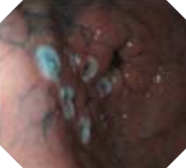
| Device | Caution | Setting | |
|---|---|---|---|
| HotBite or Needle knife |
HotBite: Use the distal end in the same way as coagulation probe. Low risk of perforation. |
Forced 35W | Forced 35W Effect1 |

| Epinephrine | Indigo carmine | ||
|---|---|---|---|
| Saline | Used (1 ampule per 100 cc) |
Used | Merit: Approved by Japanese insurance system. Demerit: Short duration. |
| Mannitol | Used (0.5 ampule per 100 cc) |
Used | When lifting the submucosal layer is difficult. |
| Use of indigo: Recommended in principle. | |||
| Device | Caution | Setting | |
|---|---|---|---|
| HotBite | AutCut 120W Effect3 | AutCut 120W Effect5~6 | |
| Needle knife | AutCut 120W Effect3 | AutCut 120W Effect4 | |
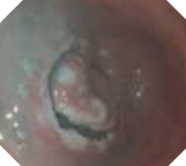
| Device | Caution | Setting | |
|---|---|---|---|
| ITknife | Pulling cut direction (2CH endoscope: An appropriate biopsy port should be used): Extremely quick, stable incision. Bleeding can be reduced by maintaining the depth of HotBite. |
EndoCut 120W Effect3 AutoCut 120W Effect3 |
EndoCut 120W Effect3 AutoCut 120W Effect5~8 |
| HotClaw | Same manipulation as biopsy. Cutting in the lateral direction with respect to the endoscope axis. Suitable for beginners. | ||
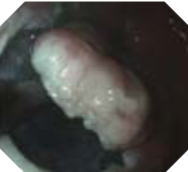
| Device | Caution | Countertraction | Setting | |
|---|---|---|---|---|
| ITknife | Coagulation performance is quite stable thanks to “ITknife’s line contact with tissue.” *A HotBite may also be used with scarring, etc. |
Use a 2CH endoscope. Use a distal attachment and hood. |
EndoCut 120W Effect3 AutoCut 120W Effect3 |
EndoCut 120W Effect3 AutoCut 120W Effect5~8 |
| HotClaw | ||||
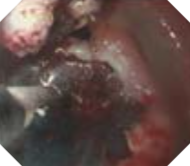
| Device | Caution | Setting | |
|---|---|---|---|
| ITknife | Just supply Coag current during the incision or dissection. | Forced 40W | Forced 40W Effect1 |
| Coagrasper | 2 to 3 sec. current supply. | SoftCoag 50W Forced 40W |
SoftCoag 50W Effect4~5 Forced 40W Effect1 |
Haemostatic forceps: Spurting from vein―Current supply with distal end only (Forced 40W). Vein: SoftCoag 60 to 50W.
Artery: SoftCoag 40W. Arterial bleeding: SoftCoag 60 to 50W. If this cannot stop bleeding, add Forced 40W for a few seconds.
*The Forced mode enables instant haemostasis. Please be careful because the haemostatic ability becomes lower for the carbonised tissue. Supply SoftCoag current in several times, intermittently. If the patient has high blood pressure, control it to the normal range. If the water jet function is not available, use an irrigation tube on a 2CH endoscope. If bleeding cannot be stopped at all, use a clip and supply current.
| Method | Timing | Tip |
|---|---|---|
| Clipping (Ligating snare can also be used together.) |
Immediately after finding perforation. | Discontinue the procedure if required and start over the next day. |
* May not be available in your area.
- Content Type

